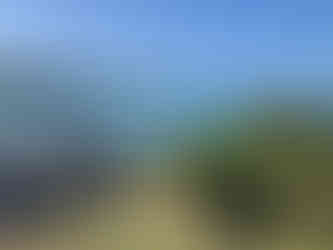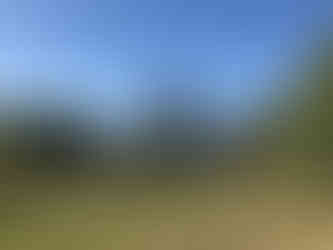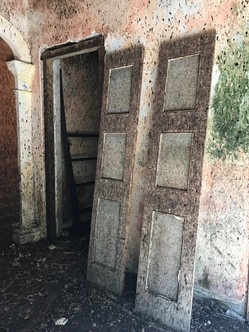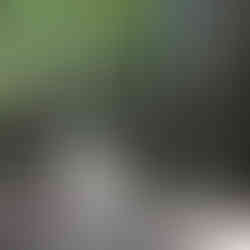17 || Locked in Paradise
- Fatjax

- May 13, 2020
- 4 min read
27th March Lameshure Bay St John
We continued to stock up. In case there would come a day when we could not get to shore, or we were forced to sail back across the Atlantic. Once Iain was sufficiently satisfied we could survive, we ventured back to the island of St John and headed for Great Lameshur Bay which is in the marine park, for a few days of relaxation and The List, in the hope this madness would pass.

It was very calming and peaceful here. We were beginning to feel settled and relaxed. We swam, snorkelled and I continued to hone my dinghy driving skills.
Although public buildings were closed. The parks and beaches remained open, providing social distancing was adhered to.
Iain prepared his bag and we headed for the Petroglyph Trail. We had the map, we were prepared. The trails were along the old plantation roads which lead from the slave’s village to the mill, the distillery and plantation house. However, at every opportunity, the roads have been engulfed by the abundance of vegetation shielding their secrets of a past life.
The first signpost we stumbled upon took us to an old distillery which was not on the map. There was very little left of the buildings. It was interesting to note the materials used to construct the buildings. They were made from local stone and broken coral which was rendered and finally painted. We explored the grounds and enjoyed the view of the bay.
We returned to the path, eventually arriving at the sign post which did not make logical sense causing us to make several detour. We saw lots of sights which perhaps are missed by other trekkers.

The first detour led us to an old village which was completely overgrown and crumbling. We crossed a dry river and climbed over fallen trees. It was evident we were not on the recommended route, so we back tracked to the sign post to start again. It was on our walk back, we noticed we were being followed at a distance by a very shy deer. She stayed with us for some time, eventually leaving at the cross roads of what we hoped would be the correct way to the carvings.
We were walking up hill along another old road, but this time we arrived at the Plantation House. It was a very sad sight. It had been grand in its day. It sat at the top of the hill, commanding a magnificent vista. We were surrounded by evidence of restoration work which had been started and abandoned some years ago. It looked as though the workmen had gone to lunch and never returned.
We ventured back down the road to study the same signpost for the third time. There was only one way left to try and luckily it led to the Petroglyphs. The walk was enchanting. The plants were vibrant shades of green and thriving in the warm humid conditions. Iain seemed to be enjoying this walk in the undergrowth.
We eventually arrived at the small pool of fresh water. The water fall had ceased to flow but with a few rainy days and a little imagination, I am sure the clearing would return to its former majestic beauty. There was an atmosphere of calm and tranquility here which filled us with peace. There were fish in the pool and dragonflies danced above the water darting back and forth in the sunshine. It was quite easy to see why this spot would be deemed a resting place for the gods.

It was a very pleasant day. Although twice the distance we had planned to venture, we were very happy we got lost and returned to the boat feeling enriched by our adventures.
On Thursday, once again, Iain prepared his bag and we headed for The Bordeaux Mountain on a 15 mile hike. This was becoming a regular theme with our trips ashore. Iain embraced the challenge of the climb at great speed, I concentrated on breathing and having pleasant thoughts towards the mountain goat I chose to marry.
As always, there was an up before the down but we left early and most of the climb was under the protection of the canopy. When we reached the road we were greeted by the most beautiful gift. A butterfly feasting on the morning nectar in a flower which I used for our niece, Katherine’s wedding. This sight took the edge off the developing heat of the day and my aching knees. I smiled.

The downward path was delightful. The trees and undergrowth were very different here.
Lots of the plants we passed are familiar house and garden plants. However, in their natural habitat are quite majestic and commanding.
The trail was leading us to the Ruins of Par Force Village where the slaves lived who worked the Mill. Although the production of sugar ended in 1916, the workers stayed cultivating crops and raising their cattle until they abandoned the village in the 1940s.
We continued until the path opened into the large site of the Sugar Mill. This was the most preserved site we had come across during our walks and it was very well signposted with detailed information about the remains. This is the only mill on the island which invested in a steam engine which was manufactured in Glasgow and shipped to the island in the 1860s. The engine and all its workings were a great source of fascination to Iain. We both spent a great deal of time enjoying the area and picturing the hive of productivity from years gone by.
We returned to the boat exhausted but having enjoyed yet another day of exploring.


































Comments